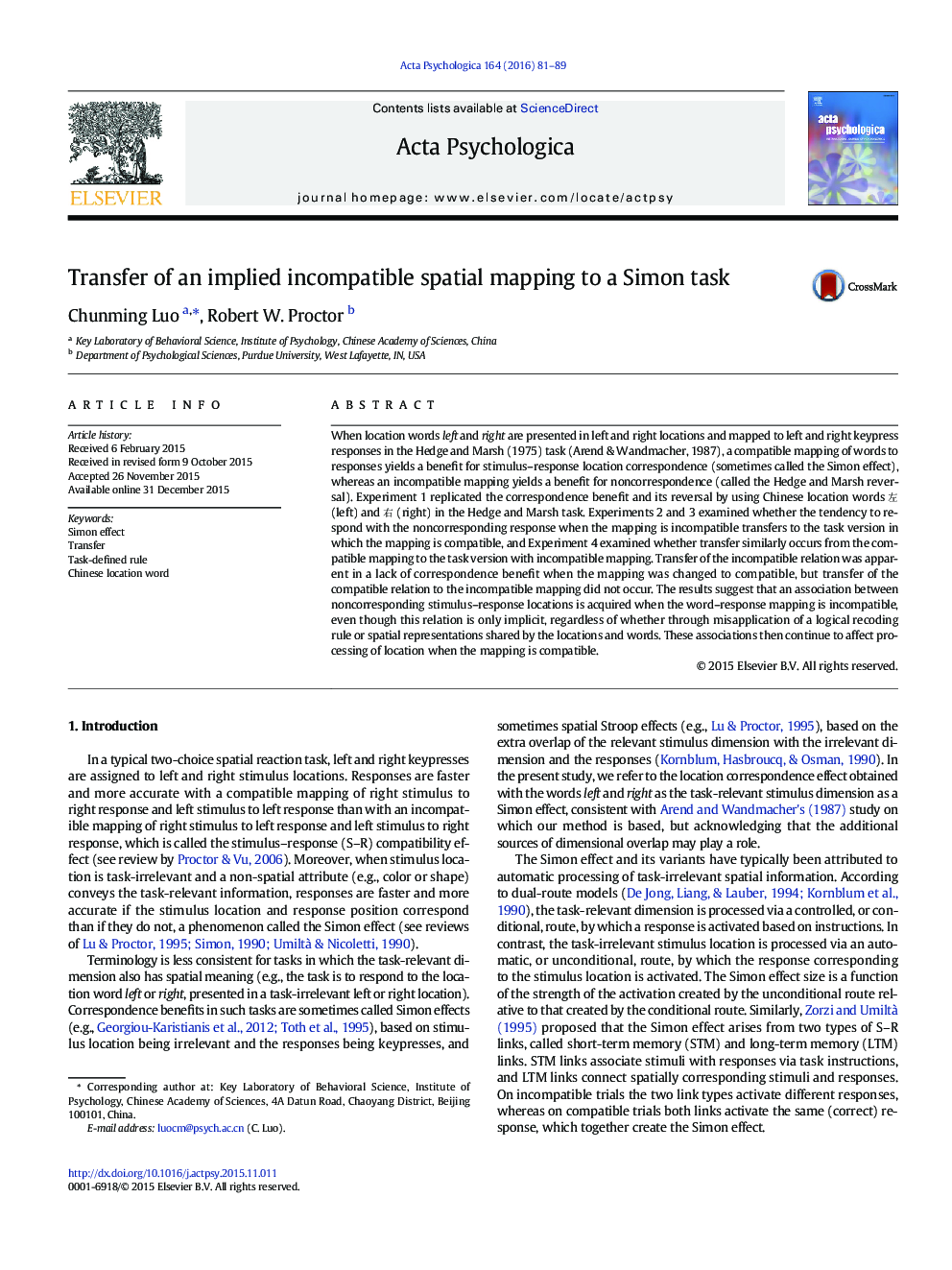| Article ID | Journal | Published Year | Pages | File Type |
|---|---|---|---|---|
| 919660 | Acta Psychologica | 2016 | 9 Pages |
•A Simon effect occurs for Chinese location words mapped compatibly to keypresses.•A reverse Simon effect occurs for location words mapped incompatibly to keypresses.•The reversal implies a “respond opposite” rule is transferred to stimulus location.•The Simon effect is absent when the compatible task follows an incompatible one.•The “respond opposite” rule continues to be applied when it is no longer relevant.
When location words left and right are presented in left and right locations and mapped to left and right keypress responses in the Hedge and Marsh (1975) task (Arend & Wandmacher, 1987), a compatible mapping of words to responses yields a benefit for stimulus–response location correspondence (sometimes called the Simon effect), whereas an incompatible mapping yields a benefit for noncorrespondence (called the Hedge and Marsh reversal). Experiment 1 replicated the correspondence benefit and its reversal by using Chinese location words 左 (left) and 右 (right) in the Hedge and Marsh task. Experiments 2 and 3 examined whether the tendency to respond with the noncorresponding response when the mapping is incompatible transfers to the task version in which the mapping is compatible, and Experiment 4 examined whether transfer similarly occurs from the compatible mapping to the task version with incompatible mapping. Transfer of the incompatible relation was apparent in a lack of correspondence benefit when the mapping was changed to compatible, but transfer of the compatible relation to the incompatible mapping did not occur. The results suggest that an association between noncorresponding stimulus–response locations is acquired when the word–response mapping is incompatible, even though this relation is only implicit, regardless of whether through misapplication of a logical recoding rule or spatial representations shared by the locations and words. These associations then continue to affect processing of location when the mapping is compatible.
